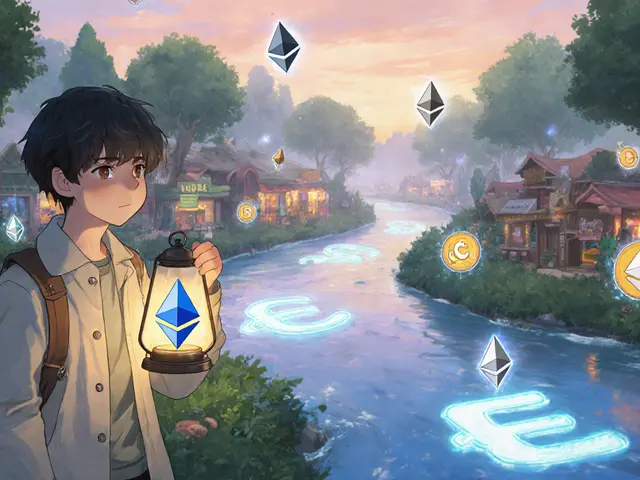Play-to-Earn: Turning Game Time into Real Earnings
When you hear Play-to-Earn, a gaming model that rewards players with cryptocurrency or tokens for in‑game achievements. Also known as P2E, it blends fun and finance.
One of the core building blocks is the gaming token, a digital asset used as in‑game currency, reward, or stake. These tokens let developers create economies that mirror real markets, letting players buy, sell, or trade assets on decentralized exchanges. Because the token sits on a blockchain, every transaction is transparent and immutable, which fuels trust among gamers.
Key Components of Play-to-Earn
Another pillar is the blockchain platform, the infrastructure that hosts game logic, smart contracts, and token standards. Platforms like Ethereum, Solana, and Polygon provide the speed and low fees needed for smooth gameplay. Without a reliable blockchain, token transfers would be slow, costly, and could break the user experience.
Play-to-Earn play-to-earn also leans heavily on NFTs, unique, non‑fungible tokens that represent in‑game items, characters, or lands. NFTs give each asset a distinct identity, enabling true ownership and the possibility to earn royalties when items are resold. This creates a secondary market where players can profit long after they stop playing.
Airdrops have become a popular way to kickstart new Play-to-Earn ecosystems. An airdrop, a free distribution of tokens to early adopters or community members can boost user acquisition and generate buzz. Projects often tie airdrop eligibility to gameplay milestones, encouraging deeper engagement.
Regulation is another factor that shapes the scene. Countries with clear crypto policies tend to attract more developers, while strict bans push creators toward offshore solutions or decentralized hosting. Understanding the regulatory climate helps players avoid legal pitfalls and choose platforms that prioritize compliance.
Community dynamics drive growth as well. Strong Discord groups, Reddit threads, and influencer networks spread strategies, share market data, and organize events. When a game’s community rallies around a token, its liquidity improves, making it easier for players to cash out or reinvest.
Technology trends such as layer‑2 scaling, cross‑chain bridges, and AI‑generated content are redefining what Play-to-Earn can achieve. Layer‑2 solutions lower transaction costs, bridges let assets move between blockchains, and AI can create dynamic, procedurally generated worlds that keep players engaged.
Below you’ll find a curated list of articles covering everything from VPN tricks for crypto traders in restricted regions to deep dives on specific gaming tokens, exchange reviews, and regulatory updates. Whether you’re just curious about how to earn while you play or you’re hunting for the next big P2E opportunity, the collection gives you actionable insights and real‑world examples.
3
Galaxy Adventure Chest NFTs Airdrop (GLA): Complete Guide & Details
Discover everything about the Galaxy Adventure Chest NFTs airdrop - eligibility, claim steps, wallet options, potential rewards, risks, and FAQs in this detailed guide.
Latest Posts
Popular Posts
-
 What Is Collateralization in DeFi? A Clear Guide to How It Works and Why It Matters
What Is Collateralization in DeFi? A Clear Guide to How It Works and Why It Matters
-
 Xena Exchange Crypto Exchange Review: Professional Tools vs. Regulatory Risks
Xena Exchange Crypto Exchange Review: Professional Tools vs. Regulatory Risks
-
 What is Bitgert (BRISE) crypto coin? Full breakdown of the blockchain, tokenomics, and real-world performance
What is Bitgert (BRISE) crypto coin? Full breakdown of the blockchain, tokenomics, and real-world performance
-
 What is LUXO (LUXO) crypto coin? The truth about the luxury authentication token
What is LUXO (LUXO) crypto coin? The truth about the luxury authentication token
-
 What is Privix New (PRIVIX) Crypto Coin? Facts, Price, and Risks in 2025
What is Privix New (PRIVIX) Crypto Coin? Facts, Price, and Risks in 2025
Tags
- crypto exchange
- cryptocurrency
- crypto exchange review
- meme cryptocurrency
- blockchain
- cryptocurrency compliance
- Binance Smart Chain
- CoinMarketCap airdrop
- underground crypto Nepal
- crypto airdrop guide
- crypto staking
- Bitcoin mining Iran
- airdrop
- Ethereum staking
- GENIUS Act
- liquid staking
- cryptocurrency exchange security
- crypto
- crypto airdrop
- crypto regulations



